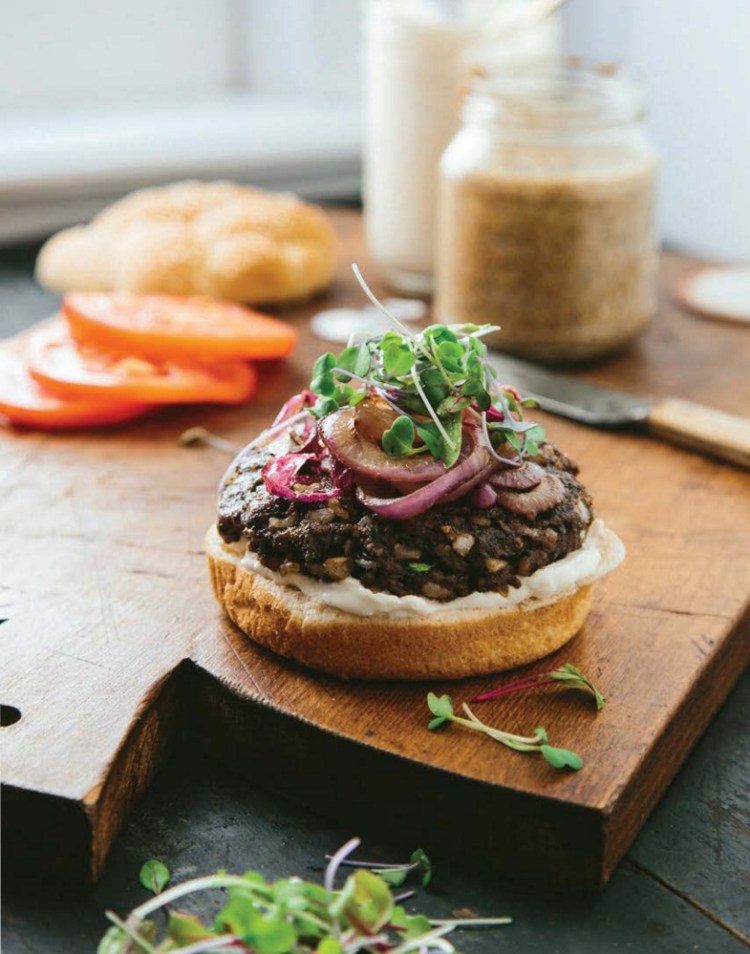With Labor Day weekend almost here, so too are the waning days of backyard cookouts. There is no time to waste. Let’s brush up on our homemade veggie burger skills so we can close the grilling season with our best vegan patties yet.
Veggie burgers are having their moment. Seemingly everyone from high-profile chefs, such as Jean-Georges Vongerichten andDavid Chang, to fast food restaurants, such as Wendy’s and White Castle, have added them to their menus.
Last year, GQ magazine bestowed its 2015 Best Burger of the Year title on the veggie burgers from Superiority Burger in New York’s East Village, and Grub Street recently penned a report headlined “Why Veggie Burgers Are Poised to Be the Country’s Most Exciting New Burgers.”
To help regular home cooks compete with trendy Manhattan restaurants and celebrity chefs, I reached out to a few veggie burger experts. The keys to a memorable plant-based burger, they said, are choosing the right ingredients, combining them to maximize texture, and preparing the burgers properly. Which, come to think of it, are the keys to pretty much all cooking.
START WITH THE RIGHT INGREDIENTS
Toni Fiore, who lives in Cumberland and hosts the PBS cooking shows “Vegan Mashup” and “Totally Vegetarian,” makes veggie burgers at least once a week. “It’s endless how many varieties of veggie burgers you can do,” Fiore told me.
Her cookbook, “Totally Vegetarian: Easy, Fast, Comforting Cooking for Every Kind of Vegetarian,” offers three vegan burger recipes, including a beet burger that came from vegetarian cookbook author Didi Emmons. “She had one of the first beet burger recipes,” Fiore said. “We didn’t realize back then how important it would be.”
Since then, beets have become a familiar veggie burger ingredient. Beyond Meat uses beets in the pre-made veggie burger it has recently begun selling in the meat department at Whole Foods Market. The burger is marketed to non-vegetarians as a veggie patty that “bleeds.”
Other commonplace veggie burger ingredients include various grains, beans, mushrooms, nuts, seeds, tomato paste and onions.
Fiore said when she is working from other people’s recipes, she wants to see nuts and grains that will offer “something to chew on. If I don’t see nuts or things that are going to give me a good texture I will modify the recipes and add them myself.”
Miyoko Schinner, who wrote “The Homemade Vegan Pantry: The Art of Making Your Own Staples,” suggested another benefit: “Nuts add richness and the fatty sensation without added oils.”
Fiore also regularly incorporates yesterday’s soups, pastas, rice or vegetables into today’s veggie burgers.
“It’s a good way of using leftover foods,” Fiore said. “And the flavors are so intense. I use leftover soup. I whiz that in a processor and mix in other things.”
USE A BINDER
Beans, grains and mushrooms don’t naturally adhere to each other, so vegan burgers need something that can hold them together. Bread crumbs, flour or vital wheat gluten can all serve that purpose.
In “Grilling Vegan Style: 125 Fired-Up Recipes to Turn Every Bite into a Backyard BBQ,” writer John Schlimm variously uses white or whole wheat flour, oats and vegan egg substitute to bind his veggie burgers.
In “The Homemade Vegan Pantry,” Schinner uses vital wheat gluten. She created her recipe for what she calls a Real Burger more than 20 years ago for her former San Francisco restaurant Now and Zen.
“I was really proud of myself when I thought of adding gluten flour to hold it together, since I hadn’t seen that in burgers,” said Schinner, who these days is known for her cultured vegan cheese company Miyoko’s Kitchen. “There weren’t many veggie burgers around back then. Most of them were tofu, bean or grain-based and were often mushy or dry and tended to crumble and fall apart.”
“I wanted a burger that would not only hold together but was juicy and chewy and without added fat,” she added. “So the idea of raw, ground mushrooms came to me. They create the juiciness of the burger, and the gluten flour holds it all together.”
For eaters who are allergic to wheat, she suggests ground flax or chia seeds to bind the patties.
PULSE, DON’T PULVERIZE
In addition to using nuts and grains, both Fiore and Schlimm recommend pulsing veggie burger ingredients in a food processor to achieve the best texture while making the ingredients stickier.
“I always tell people: ‘Don’t use the process button, use the pulse button,'” Fiore said. “If you use the process button, you have hummus or mush.”
COOK THEM CORRECTLY
Both Schlimm and Fiore chill their burger mixtures before cooking, but when it comes time to make them, the three cooks I interviewed each takes a different tack.
Schinner’s Real Burger is baked. Schlimm’s recipes are either broiled or sauteed in a skillet and then finished on the grill. To make her patties crispy on the outside, Fiore dredges them in flour or cornmeal, then cooks them in a skillet. She does so over medium-high heat for a good sear, because as she pointed out, “the longer you cook a veggie burger, it loses moisture and falls apart.”
And as both veggie burgers and veggie burger eaters proliferate, we can all agree that no one wants a veggie burger that crumbles as it cooks.
Avery Yale Kamila is a freelance food writer who lives in Portland. She can be reached at:
avery.kamila@gmail.com
Twitter: AveryYaleKamila
Send questions/comments to the editors.



